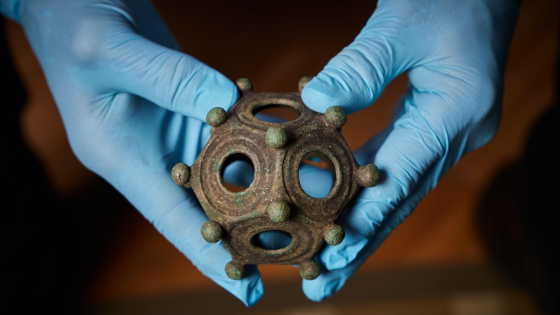The Roman dodecahedron, a mysterious 12-sided bronze object, has intrigued archaeologists since its discovery in 1739. Originating from the northwestern provinces of the Roman Empire, these artifacts date back to the second to fourth centuries A.D. Despite extensive research, their exact purpose remains elusive.
- Roman dodecahedron: 12-sided bronze object
- Origin: Northwestern Roman Empire provinces
- Dating: Second to fourth centuries A.D.
- Theories on purpose remain unconfirmed
- Linked to Platonic-Pythagorean symbolism
- Possible connection to Druidic traditions
Over 120 dodecahedrons have been unearthed across Europe, yet none have been found in Italy. Researchers like Michael Guggenberger propose that these items may have served symbolic roles, possibly linked to ancient Greek philosophies. As we delve deeper into the past, what secrets might these artifacts reveal about ancient civilizations? This exploration continues to captivate both experts and enthusiasts alike.
What makes the Roman dodecahedron so compelling? Its ambiguous purpose raises questions about ancient societal beliefs and practices. Researchers have proposed various theories regarding its function, including:
- Symbolic representation of the universe
- Possible use as a decorative item or toy
- Connection to Druidic traditions
- Potential role in ancient measurement or crafting
As we continue to uncover the mysteries of the Roman dodecahedron, it invites US to reflect on the complexities of ancient societies. What other artifacts await discovery, and how might they reshape our understanding of history?

































